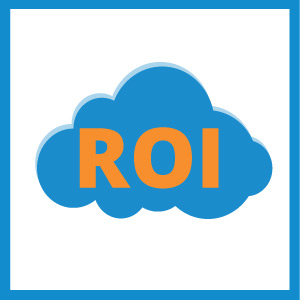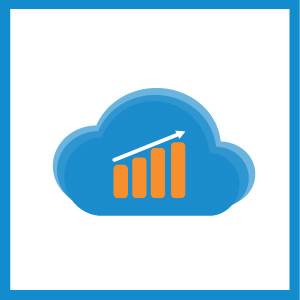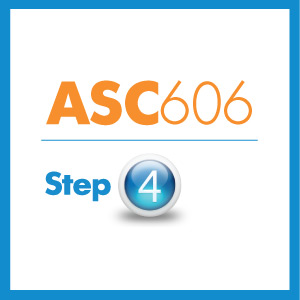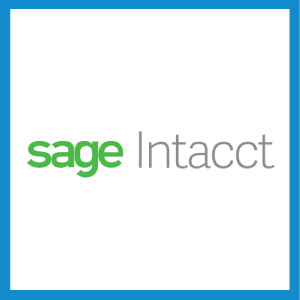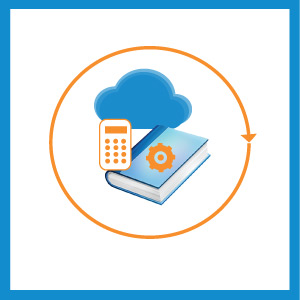Exploring The ROI of Cloud Accounting
“What’s our ROI going to be?” If you’re considering moving your company’s accounting practices into the cloud, this is one of the top questions on your mind. You’re making a change to the way you manage your finances—and updating your technology is a big step in the right direction. But how can you be sure that your investment in a cloud-based solution is going to pay off and keep yielding returns?
Why the Cloud Delivers Faster Time to Value
A cloud environment, put simply, affords a growing business more agility and flexibility than any of their traditional alternatives. Consider the on-premise systems and boxed software programs that reside on your business machines (servers and PCs): they require you to maintain an IT infrastructure, which can be costly to establish and take care of. They’re costly from the get-go.
With cloud-based, Software-as-a-Service (SaaS) solutions, on the other hand, users access their apps, tools, and data over the internet. Their computing and delivery models make them inherently more cost-effective and scalable for long-term value. Take a look at these powerful stats:
- Cloud application projects deliver 2.1x the ROI of on-premise ones, up 24% since 2012. (Nucleus Research)
- Sage Intacct customers experience an average ROI of over 250%when switching to Intacct. (Sage Intacct)
Let’s take a closer look at what impacts the ROI of a cloud accounting solution:
Lower Implementation Costs
Cloud deployments, finds Nucleus Research, incur 63% lower initial consulting and implementation costs than on-premise ones. As we just stated, adopting a cloud accounting solution doesn’t require the purchase of new hardware and software licenses, or even the hiring of a skilled IT staff.
Moving financials to the cloud is a straightforward process for companies with basic infrastructures. They can upgrade to a best-in-class system without adding complexity to their tech environment. That means getting up to speed with web-based software is a faster, easier, and can provide results in a matter of a few short weeks—sometimes sooner.
Learn more in How Upgrading to the Cloud Lets You Hit the Ground Running.
Lower Maintenance Costs
According to Strategy&, the total cost of ownership for a cloud-based solution can be 50-60% less than for traditional solutions over a 10-year period. And Nucleus Research reports that on an ongoing basis, companies spend an average of 55% less on personnel to support cloud applications compared to on-premise deployments and they use an average of 91% less energy to boot.
These savings can be attributed to the cloud software vendors’ subscription model. Customers pay a per-user subscription fee for use of the software, hosting, and support, making the arrangement highly scalable as the company grows and adds new functionality and users. And vendor’s IT team—not your internal IT team—manages the upgrades, patching, user support, etc. It’s part of the service you pay for, enabling you to focus on building your business, not your IT systems.
“Automatic” Savings and Productivity Gains.
When your business replaces manual processes and workflows with automation, cost savings tend to follow naturally. Automating key financial and accounting processes is essential to saving time, increasing data accuracy, and ultimately, lowering costs. But don’t fail to take into account your employees’ ability to work from anywhere and on any connected device. And this includes users from the back office to the executive suite. There’s a great deal of ROI-supporting “power” in the real-time insights users can uncover 24/7. Take a more detailed look in How the Cloud Provides Real Time Insights for Real Time Decision Making.
Features and Functionality
Cloud-based software solutions are ideal for companies in the midst of growth. A cloud environment is an ecosystem that’s ready for evolution. Cloud accounting software suites typically come standard with core functionality that can be expanded as your business needs change—as your company takes on new clients, partners with more vendors, adds locations or product lines, etc. It’s easy to plug wew cloud accounting software modules into your existing workflow without a great deal of programming or “moving around” of data. This holds true for integrations, too, as cloud software is built with flexible APIs that enable seamless connecting of business systems.
The net result of this scalable product enhancement is that your business can grow without significant additional investments—and with each addition of new functionality, your team is able to add more value. Find out How Cloud Accounting Lets Users Take Control of Process.
Contact us to learn more about our cloud technology services and solutions.

